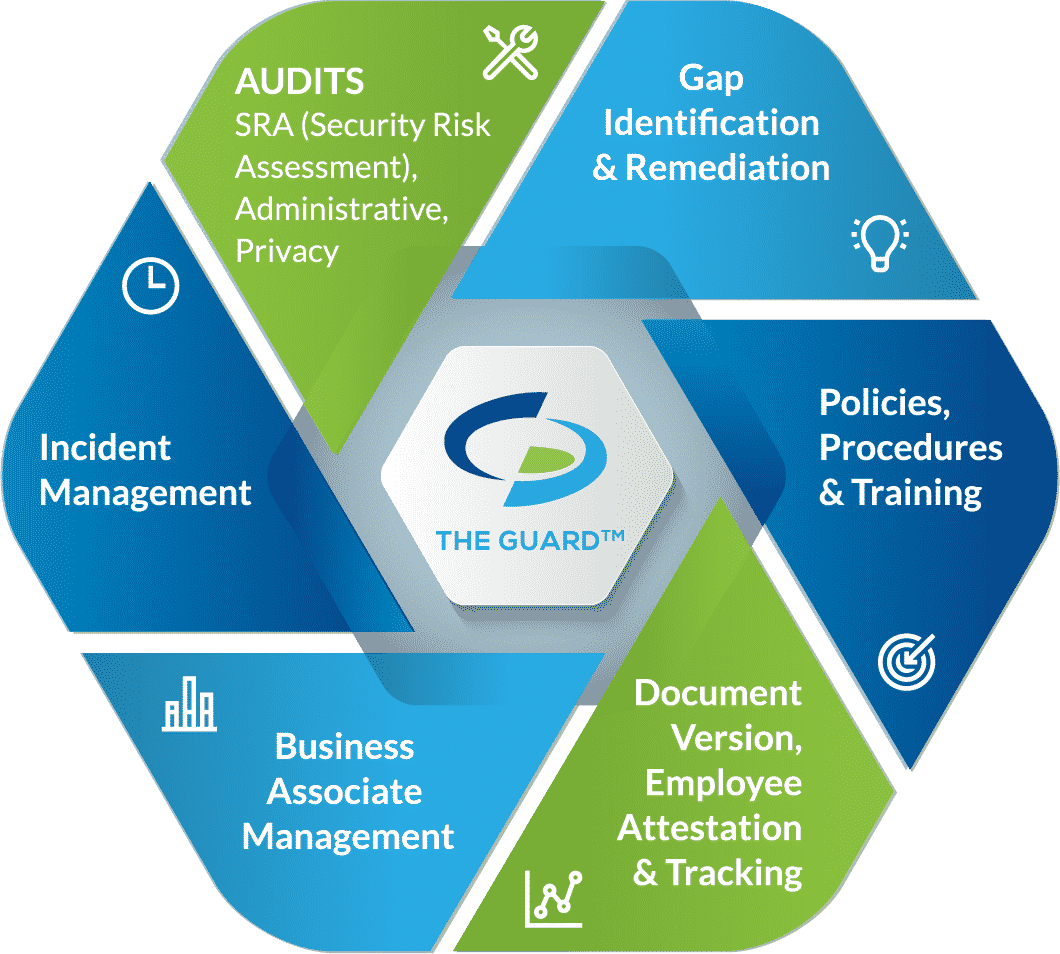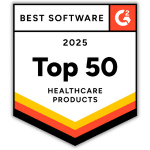Choosing the Right HIPAA Solution
There are plenty of HIPAA solutions to choose from, however, many of them address bits and pieces of the HIPAA regulations, ignoring some of the most critical aspects of compliance. Choosing the right HIPAA solution can mean all the difference in the effectiveness of your HIPAA compliance program. To provide healthcare organizations with guidance on how to choose the right HIPAA solution, what you should look for when choosing a HIPAA provider is discussed.
What is an Effective Compliance Program?
In 2016, the Department of Health and Human Services (HHS) released guidance on the components of an effective compliance program, known as the “Seven Elements of an Effective Compliance Program.”
These elements are as follows:
- Implementing written policies, procedures, and standards of conduct.
- Designating a compliance officer and compliance committee.
- Conducting effective training and education.
- Developing effective lines of communication.
- Conducting internal monitoring and auditing.
- Enforcing standards through well-publicized disciplinary guidelines.
- Responding promptly to detected offenses and undertaking corrective action.
What Does a Total HIPAA Solution Consist Of?
The HHS’ Office for Civil Rights (OCR) looks for certain things when assessing an organization’s compliance with HIPAA. This can be done in randomized audits, or as the result of a patient or employee complaint issued against an organization.
So that your organization is protected against HIPAA fines and sanctions, you will need to be able to demonstrate your “good faith” effort to comply with the law. This is why using a total HIPAA solution, such as a software that documents and stores your HIPAA compliance materials in one place, is so important.
No one wants to have to scramble to pull together documents last minute when a HIPAA audit comes their way; they want to be prepared so that in the case of an audit, they can simply pull up their records from an easy to access software.
When looking for a total HIPAA solution, you should look for the following features:
1. Self-audits
As one of the elements of an effective compliance program lists “conducting internal monitoring and auditing,” it is important to make sure that the HIPAA solution that you choose includes the required self-audits. This is NOT just a security risk analysis, although that is a very important audit, you are required to conduct:
- six self-audits annually, as a covered entity (Security Risk Analysis, Security Standards, HITECH Subtitle D, Asset and Device, Physical Site, and Privacy Assessment), or;
- five self-audits, as a business associate (privacy assessment not required).
2. Gap identification and remediation
The seven elements require you to “undertake corrective action.” For instance, self-audits uncover risks and vulnerabilities within your privacy, security, and breach notification practices. HIPAA requires you to take corrective action by creating and implementing remediation plans to address these risks and vulnerabilities. The HIPAA solution you chose should be able to provide you with remediation plans based on the answers to your self-audit questions.
3. HIPAA policies and procedures
According to the seven elements, you must, “implement written policies, procedures, and standards of conduct.” In the early days of HIPAA, healthcare organizations used to get away with store bought policy binders. However, the HHS’ OCR no longer deem a policy binder effective. This is because HIPAA applies to a variety of types and sizes of healthcare organizations. So a policy or procedure meant for a small doctor’s office, is not necessarily appropriate for a large hospital group, and vice versa. Your HIPAA solution provider should offer you custom policies and procedures that are drafted with your business practices in mind. This way you have effective policies and procedures that are feasible for your organization to implement and follow. (You must also “designate a compliance officer and compliance committee,” within your policies and procedures).
4. Employee training
“Conducting effective training and education,” is required annually. Employees must be trained on HIPAA basics, cybersecurity best practices, and your organization’s policies and procedures. You are also required to “enforce standards through well-publicized disciplinary guidelines.” Therefore, you should also train your employees on what these disciplinary guidelines are.
5. Business associate management
Although not specifically mentioned in the seven elements, the HHS issued the Omnibus Rule in which it required HIPAA business associates to be HIPAA compliant. They released further guidance informing covered entities that they are obligated to assess their business associate’s compliance, or otherwise be held liable for insufficiencies in the business associate’s security and privacy practices. This Rule also requires covered entities and business associates to sign business associate agreements (BAAs). A BAA is a legal document that requires each signing party to be HIPAA compliant, and be responsible for maintaining their compliance.
6. Incident response
Incident response is a key factor of HIPAA compliance. Your HIPAA solution should give your employees means to anonymously report suspected HIPAA breaches. You must also “respond promptly to detected offenses and undertake corrective action” and “develop effective lines of communication” between you and your employees, and your Compliance Officer and the HHS’ OCR.








